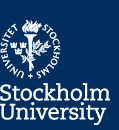Time: 31 October 2018, 1 - 2 pm
Place: B705
Abstract
During 2014–2015, Sweden received asylum applications from more than 240,000 people, of which more than 40,000 were termed unaccompanied minors. In a large number of cases, claims by asylum seekers of being below 18 years were not trusted by Swedish authorities. To handle the situation, the Swedish national board of forensic medicine (Rättsmedicinalverket, RMV) was assigned by the government to create a centralized system for medical age assessments. RMV introduced a procedure including two biological age indicators; x-ray of the third molars and magnetic resonance imaging of the distal femoral epiphysis. In 2017, a total of 9617 males and 337 females were subjected to this procedure. No validation study for the procedure was however published, and the observed number of cases with different maturity combinations in teeth and femur were unexpected given the claims originally made by RMV.
We present a general stochastic model enabling us to study which combinations of age indicator model parameters and age population profiles are consistent with the observed 2017 data for males. We find that, contrary to some RMV claims, maturity of the femur, as observed by RMV, appears on average well before maturity of teeth. According to our estimates, approximately 15% of the tested males were children. These children had an approximate 33% risk of being classified as adults. The corresponding risk for an adult to be misclassified as a child was approximately 7%. We determine uncertainties and ranges of estimates under reasonable perturbations of the prior.
Link to article: https://link.springer.com/article/10.1007%2Fs00414-018-1916-3



